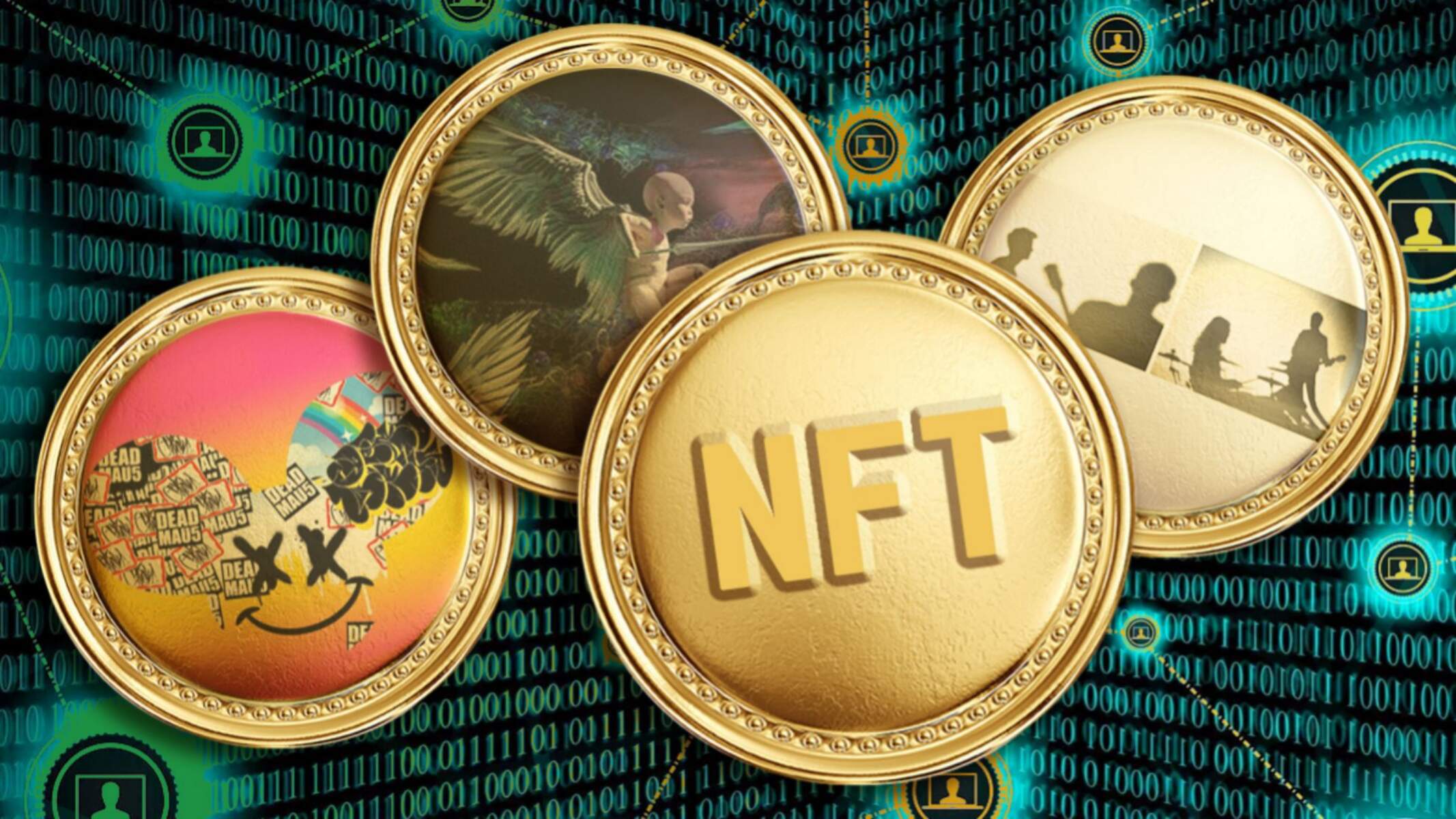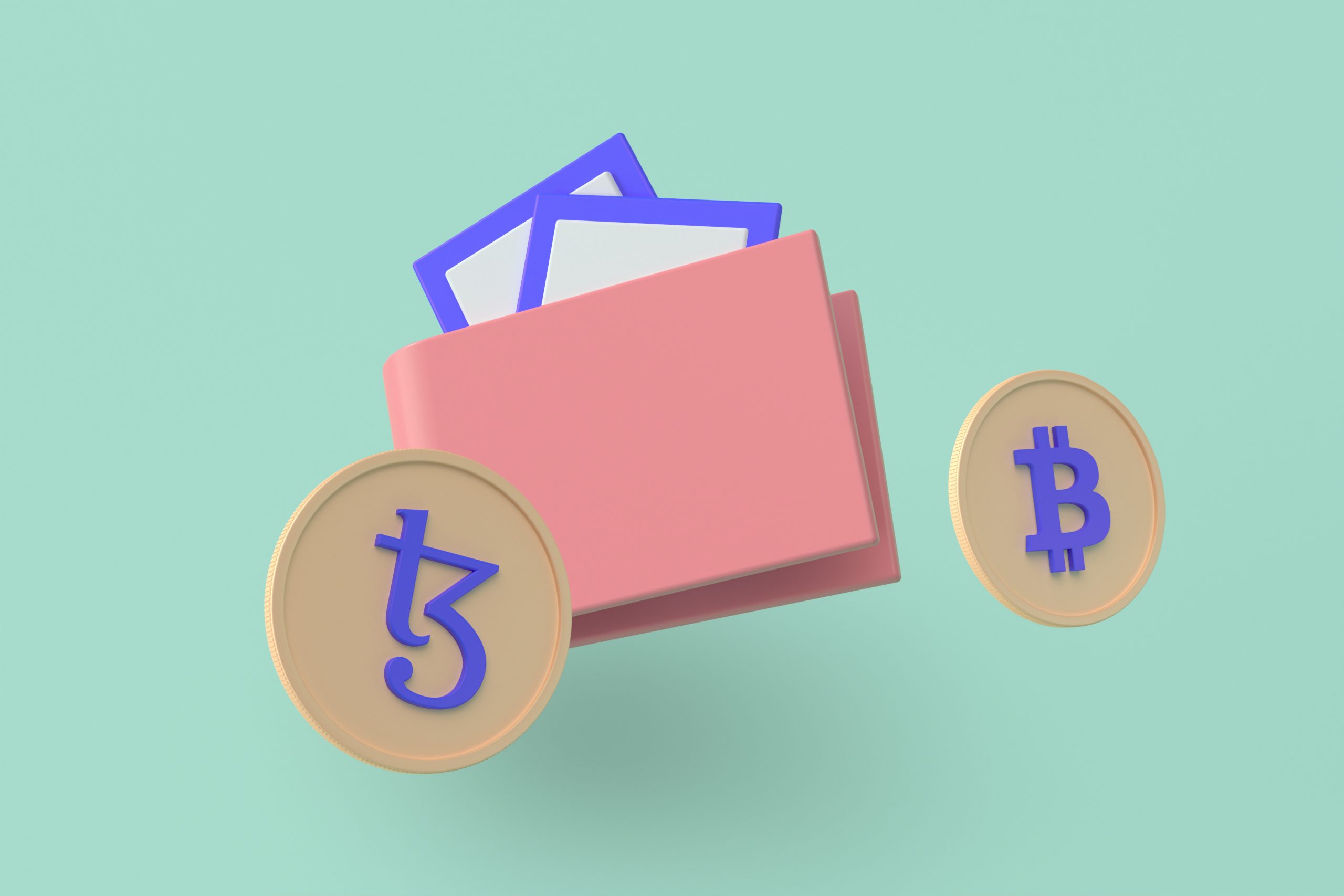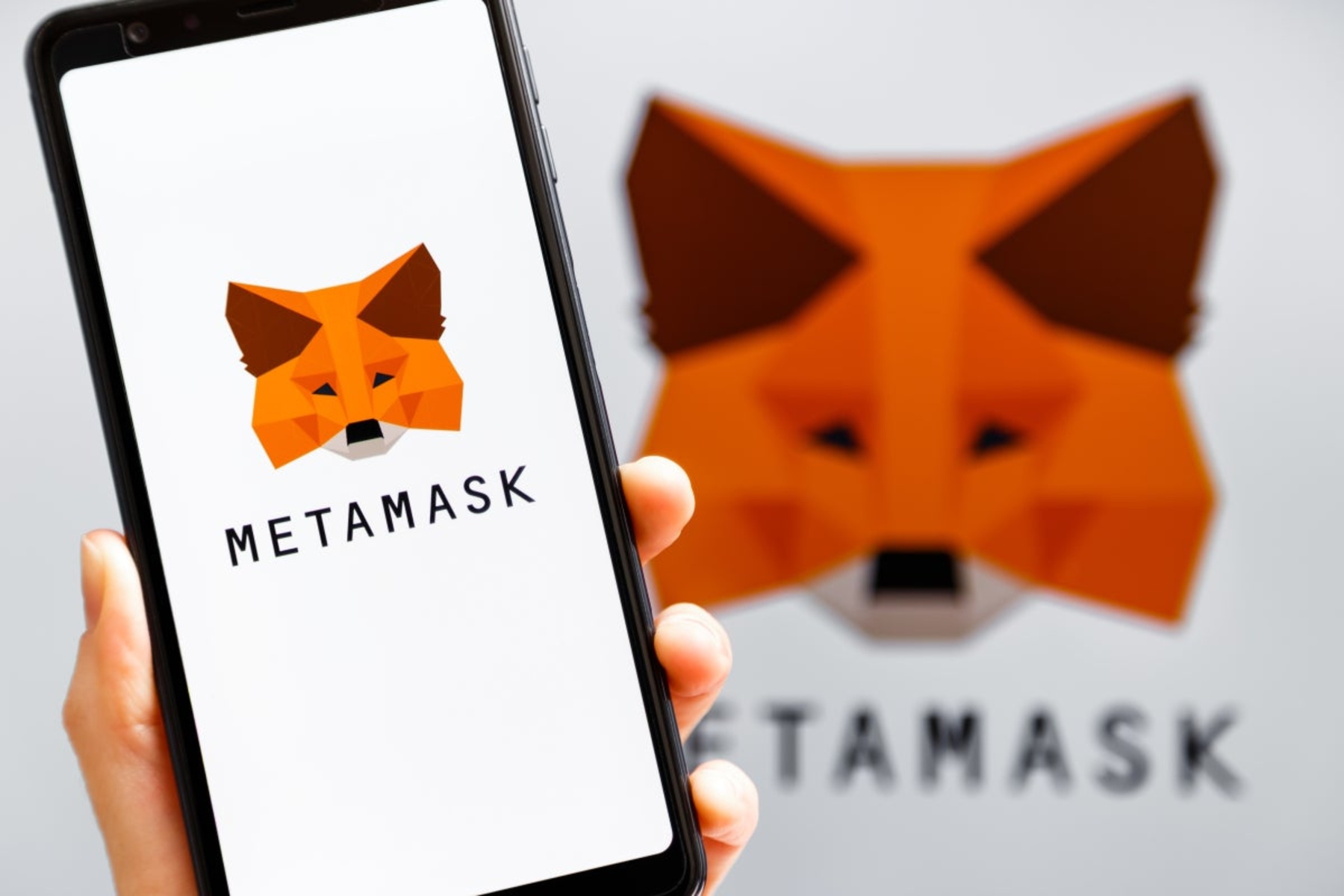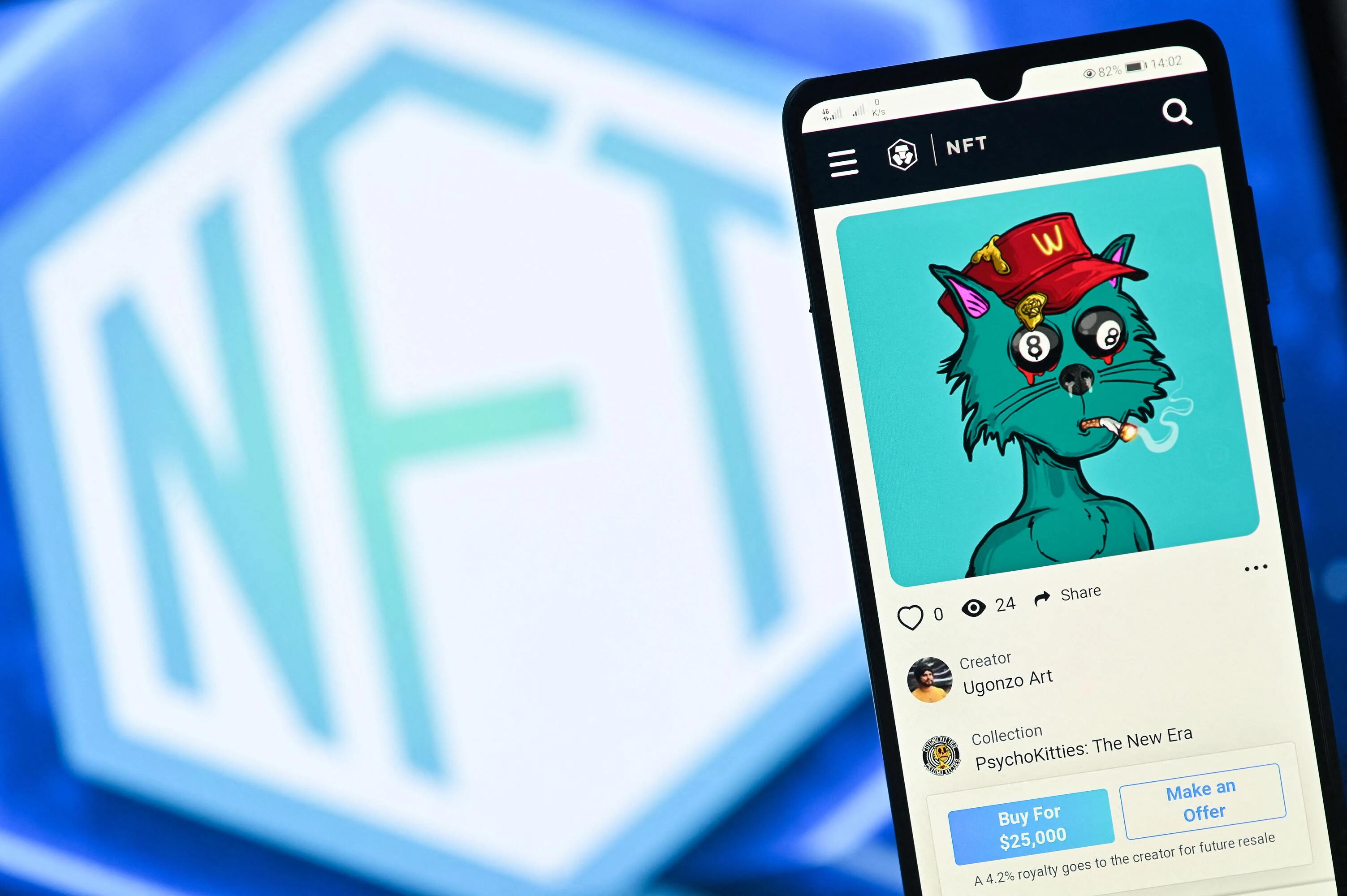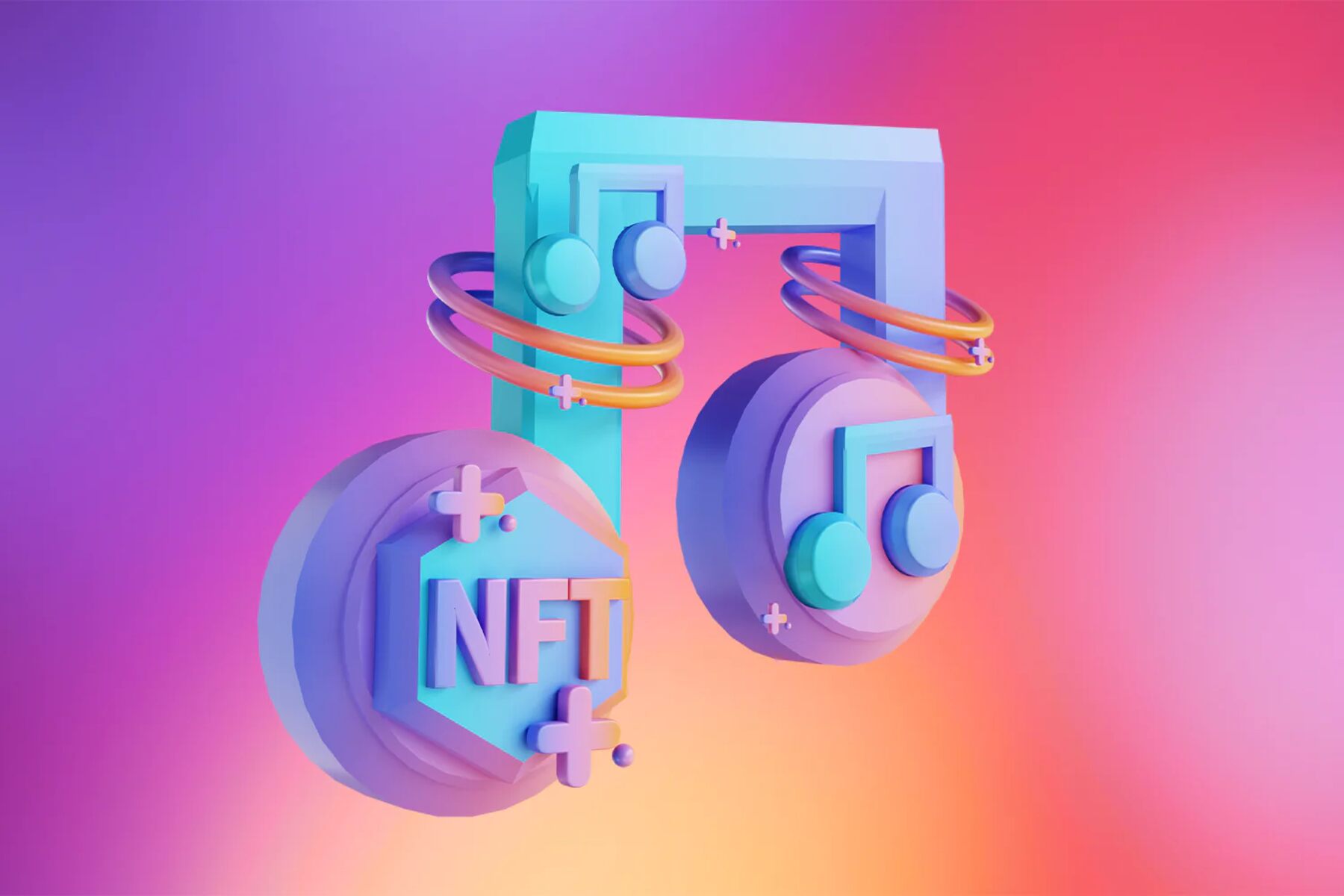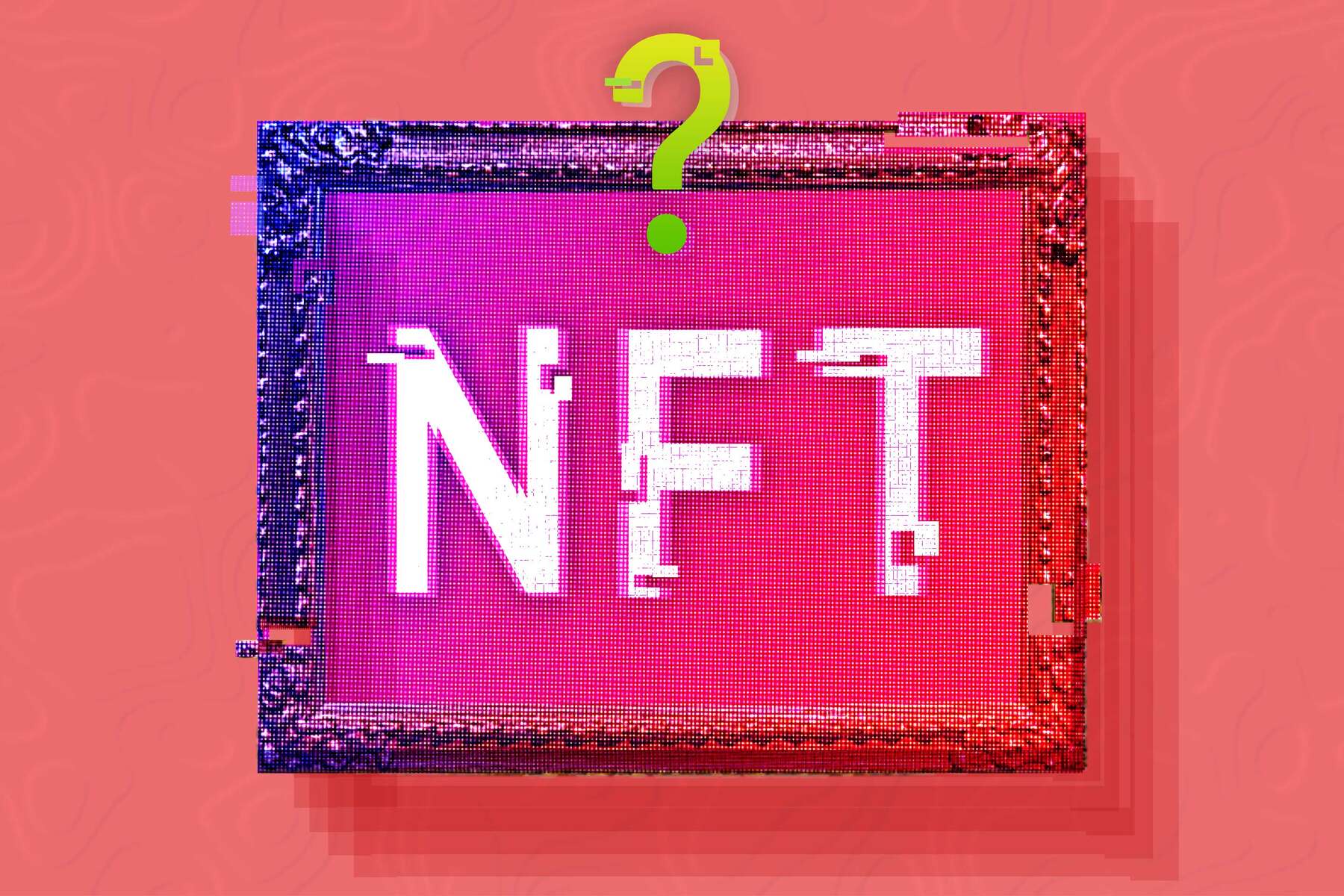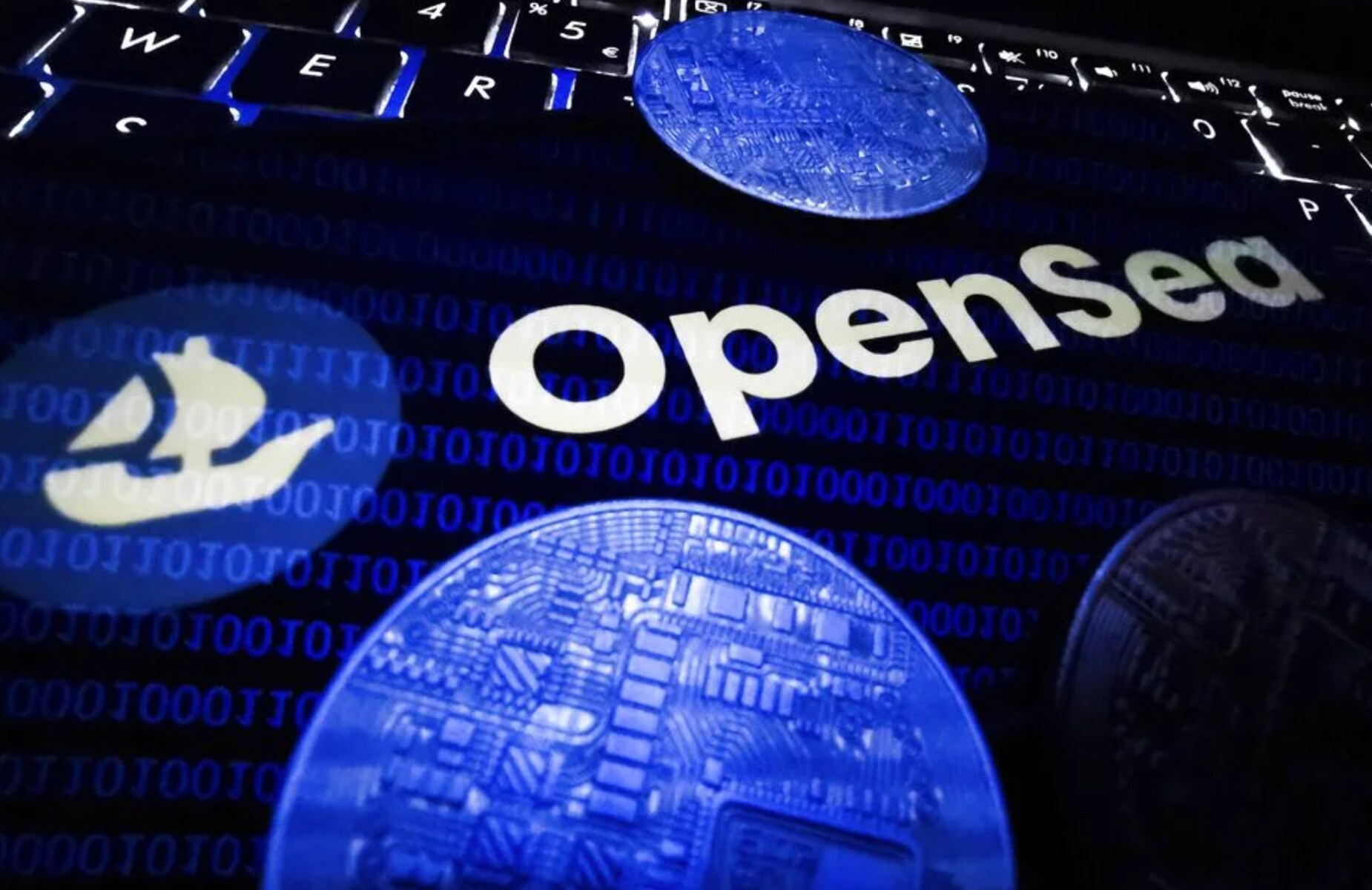Introduction
The digital world is constantly evolving, and one of the latest innovations that has taken the art and collectibles market by storm is Non-Fungible Tokens (NFTs). These unique digital assets are revolutionizing the way we perceive and trade digital art, music, videos, and other forms of digital content. While NFTs have gained widespread attention, there is another essential element that plays a significant role in the NFT ecosystem – NFT Labels.
NFT Labels are like the digital “labels” or tags that provide crucial information and context about an NFT. They serve as a form of metadata that helps buyers, sellers, and collectors understand the authenticity, rarity, and other unique characteristics of an NFT. NFT Labels play a pivotal role in establishing trust and transparency in the NFT marketplace, where verifying the legitimacy of digital assets is paramount.
Unlike traditional physical artworks or collectibles, which come with inherent physical attributes, NFTs lack these tangible characteristics. NFT Labels bridge this gap by providing key details about the NFT, such as the artist’s name, title of the artwork, edition number, provenance, and more. This additional information helps prospective buyers and collectors make informed decisions and distinguishes one NFT from another.
NFT Labels also enable artists and creators to express their unique style and vision. By attaching specific labels to their NFTs, artists can communicate their intended meaning or message behind the artwork. For example, an NFT Label could indicate that the artwork is part of a limited edition series, or that it represents a milestone in the artist’s career. These labels add an extra layer of value and significance to the NFT, making it more desirable to collectors.
In the rapidly growing NFT space, NFT Labels have become indispensable tools for collectors, artists, platforms, and enthusiasts alike. They not only provide valuable information but also help establish credibility and authority in the marketplace. By highlighting the key features and characteristics of an NFT, labels enhance the overall user experience and ensure a more seamless and trustworthy transaction process.
In the following sections, we will explore the functionality of NFT Labels, their importance in the NFT ecosystem, different types of labels, popular examples, as well as the benefits and limitations they bring to the table.
What is an NFT Label?
An NFT Label serves as a digital identification card for non-fungible tokens (NFTs), providing vital information and context about the digital asset. It acts as a form of metadata, giving collectors, buyers, and sellers valuable insights into the authenticity, rarity, and other unique attributes of an NFT.
Think of an NFT Label as the “label” or tag that accompanies a physical artwork or collectible, providing details about the artist, title, edition, date of creation, and more. However, while physical labels are attached to the artwork itself, NFT Labels are embedded in the blockchain, ensuring their immutability and tamper-proof nature.
The information displayed on an NFT Label varies depending on the creator’s preferences and the platform hosting the NFT. Common details include the artist’s name, a description of the artwork, edition number (if applicable), release date, and any additional notes or comments from the artist.
One of the essential functions of an NFT Label is to establish provenance. Provenance refers to the history and origin of an artwork, providing a record of ownership and authenticity. With physical artworks, provenance can be easily tracked through paperwork and documentation. In the world of NFTs, where authenticity is of utmost importance, NFT Labels help establish and validate the origin and ownership chain of the digital asset.
Another crucial feature of NFT Labels is their ability to communicate the value and uniqueness of an NFT. By showcasing details such as the rarity of the edition, the presence of limited features or collectibles within the NFT, or the artist’s reputation, the label helps potential buyers understand the significance and desirability of the digital asset. This information aids collectors in making well-informed purchasing decisions based on their preferences and budget.
Furthermore, NFT Labels allow artists to express their artistic vision and creativity beyond the artwork itself. By adding labels to their NFTs, artists can share their intentions, interpretations, or personal stories related to the creation of the digital asset. This additional context adds depth and value to the NFT, connecting artists and collectors on a deeper level.
In summary, NFT Labels are the digital representations of the labels or tags traditionally associated with physical artworks and collectibles. They serve as a source of vital information, authentication, and provenance, while also enabling artists to add personal touches and express their artistic vision. NFT Labels play a crucial role in the NFT ecosystem, promoting trust, transparency, and enhanced user experiences for collectors, buyers, sellers, and platforms alike.
How does an NFT Label work?
NFT Labels function as digital metadata that is embedded within the blockchain, providing essential details about a non-fungible token (NFT) and ensuring its authenticity and uniqueness.
When an NFT is minted or created, the label is attached to it, storing important information about the artwork, artist, edition number, and other relevant data. This label becomes an integral part of the NFT, inseparable and immutable throughout its lifecycle.
The information contained in an NFT Label is transparent and publicly accessible. This transparency enables potential buyers, collectors, and other participants in the NFT marketplace to verify the legitimacy and provenance of the digital asset. The label serves as a digital fingerprint, providing crucial data points that authenticate the NFT’s origin, ownership, and characteristics.
NFT Labels typically contain standardized fields of information, such as the artist’s name, title of the artwork, edition number, release date, and a description of the NFT. However, the flexibility of blockchain technology allows for the inclusion of additional custom fields, enabling artists and platforms to provide more specific and unique information about the NFT.
To access the information stored in an NFT Label, users can refer to the blockchain explorer associated with the specific blockchain network on which the NFT was minted. The blockchain explorer displays the transaction history and details of the NFT, including the label information. By searching for the NFT’s unique identifier, users can retrieve the associated label and view its contents.
Once the NFT Label is retrieved, collectors can use it as a reference to assess the value and desirability of the NFT. They can verify crucial aspects such as the rarity of the edition, the reputation and recognition of the artist, and any notable features or attributes associated with the NFT. This information allows collectors to make informed decisions and gauge the potential worth of the NFT in the marketplace.
Additionally, NFT Labels can be utilized by platforms and marketplaces to enhance the browsing and discovery experience for users. By utilizing the label information, these platforms can categorize and filter NFTs based on specific attributes, making it easier for buyers and collectors to find NFTs that align with their preferences and interests.
In summary, NFT Labels function as metadata embedded in the blockchain, providing crucial information about an NFT’s origin, authenticity, and unique attributes. They are publicly accessible, transparent, and immutable, ensuring the trust and transparency of the NFT marketplace. Collectors, buyers, and platforms can leverage NFT Labels to make informed decisions and enhance the overall NFT experience.
Why are NFT Labels important?
NFT Labels play a vital role in the non-fungible token (NFT) ecosystem, offering several benefits that contribute to the trust, transparency, and value of digital assets. Here’s why NFT Labels are important:
1. Establishing authenticity: NFT Labels provide crucial information about an NFT’s origin, ownership, and provenance. They act as a digital fingerprint, ensuring that the NFT is genuine and not a copy or forgery. This authenticity is essential for buyers and collectors, as it instills confidence and trust in the marketplace.
2. Verifying rarity and uniqueness: NFT Labels highlight the rarity and uniqueness of an NFT. They indicate the edition number, whether it is a limited edition or one-of-a-kind piece, and any special features or collectibles associated with the NFT. These details help collectors assess the value and desirability of the NFT and differentiate it from similar artworks or digital assets.
3. Providing artist information: NFT Labels showcase information about the artist behind the NFT, including their name, biography, and other relevant details. This transparency enables collectors to learn more about the artist’s background, style, and artistic journey, creating a deeper connection and appreciation for the artwork.
4. Enabling provenance and ownership tracking: NFT Labels document the transaction history and ownership chain of an NFT. This provenance is stored on the blockchain, making it easily accessible and transparent. Collectors can trace an NFT’s ownership back to its original creator, ensuring a clear and verifiable record of ownership.
5. Cultivating trust and transparency: NFT Labels enhance the overall trust and transparency in the NFT marketplace. They provide buyers and sellers with the necessary information to make informed decisions and validate the authenticity and value of an NFT. This transparency improves the user experience and reduces the potential for fraud or counterfeit NFTs.
6. Enhancing discoverability and categorization: NFT Labels allow platforms and marketplaces to categorize and filter NFTs based on their specific attributes. This functionality makes it easier for buyers and collectors to discover NFTs that align with their interests and preferences. It also enables artists to gain more exposure and reach their target audience effectively.
7. Facilitating storytelling and context: NFT Labels enable artists to share the story, inspiration, and context behind their artworks. Artists can include descriptions, commentaries, or personal notes in the label, providing collectors with a deeper understanding of the creative process and the artist’s intentions. This narrative adds value and enriches the overall experience of owning an NFT.
In summary, NFT Labels are crucial elements in the NFT ecosystem, offering benefits such as establishing authenticity, verifying rarity, providing artist information, enabling provenance tracking, cultivating trust and transparency, enhancing discoverability, and facilitating storytelling. These labels enhance the overall value and appeal of NFTs, contributing to the growth and evolution of the digital art and collectibles market.
Different types of NFT Labels
NFT Labels come in various types, each serving a specific purpose and providing unique information about a non-fungible token (NFT). Here are some of the different types of NFT Labels commonly used in the NFT ecosystem:
1. Artwork Details Label: This type of NFT Label provides essential information about the artwork itself. It includes details such as the title of the artwork, the medium used, dimensions (if applicable), and a brief description or statement from the artist. The Artwork Details Label helps collectors understand the artistic concept and context of the NFT.
2. Edition Label: NFTs can be released in limited editions, similar to physical art prints. The Edition Label indicates the number of editions produced and whether the NFT belongs to a specific edition, such as a limited edition of 10 or a one-of-a-kind edition. This label adds rarity and exclusivity to the NFT, influencing its value in the marketplace.
3. Provenance Label: Provenance is crucial in the NFT market, as it establishes the history and authenticity of the artwork. The Provenance Label provides information about the ownership chain and the transaction history of the NFT. It shows when and where the NFT was minted, as well as the previous owners, allowing collectors to verify the legitimacy and trace the origin of the digital asset.
4. Creator Label: The Creator Label focuses on providing details about the artist or creator of the NFT. It includes the artist’s name, biography, and possibly links to their portfolio or social media profiles. This label allows collectors to learn more about the artist’s background and artistic style, facilitating a stronger connection between the collector and the artwork.
5. Interactive Label: Some NFTs offer interactive or dynamic elements that evolve or respond to user input. The Interactive Label indicates that the NFT has interactive features, providing instructions or guidelines on how to interact with the digital artwork. It adds an immersive and engaging dimension to the NFT, making it more interactive and captivating for the collector.
6. Performance Label: Performance art is a unique category of NFTs that involve live or real-time performances. The Performance Label provides information about the artist’s performance schedule, upcoming shows, or live streaming events associated with the NFT. It allows collectors to participate in the performance aspect of the artwork and stay updated on the artist’s activities.
7. Certification Label: Certification Labels are used to validate and authenticate the NFT. They can be issued by trusted third-party organizations or industry experts, providing an additional layer of credibility to the digital asset. The Certification Label ensures that the NFT meets specific standards and has been verified for its quality and authenticity.
These are just some examples of the different types of NFT Labels available. Depending on the platform and the needs of the creator, additional labels or variations of these labels may exist. The diverse range of NFT Labels adds richness and depth to the NFT marketplace, empowering collectors with valuable information and enhancing the overall experience of owning and trading NFTs.
Examples of popular NFT Labels
The non-fungible token (NFT) market is full of diverse and exciting digital assets, each with its own unique NFT Label. Here are some examples of popular NFT Labels used by artists, platforms, and collectors:
1. “Limited Edition” Label: Many NFTs are released as limited editions, similar to physical art prints. The “Limited Edition” label indicates that the NFT belongs to a specific edition, such as a limited edition of 10 or a one-of-a-kind edition. This label adds exclusivity and scarcity to the NFT, making it more desirable and valuable to collectors.
2. “Verified Authentic” Label: In the world of NFTs, trust and authenticity are paramount. Some NFT marketplaces or platforms offer a “Verified Authentic” label, indicating that the NFT has undergone verification processes to ensure its genuine origin and ownership. This label provides assurance to collectors that they are acquiring a verified and authentic digital asset.
3. “Creator’s Signature” Label: Artists often include a unique signature or mark within the NFT Label, symbolizing their connection to the artwork. This signature label serves as a personal touch, adding an artist’s distinctive mark and enhancing the artwork’s collectability and value.
4. “Provenance Tracker” Label: Provenance is a crucial aspect of NFTs. Some NFT Labels include a “Provenance Tracker” feature, which allows collectors to view the complete ownership history and transaction details of the NFT. This label promotes transparency and ensures that the NFT’s provenance can be easily traced and verified.
5. “Interactive Elements” Label: Some NFTs offer interactive or dynamic elements, allowing collectors to engage and interact with the artwork. The “Interactive Elements” label indicates that the NFT has interactive features, such as animations, sound, or user-controlled elements. This label enhances the overall experience of owning and engaging with the NFT.
6. “Verified Rarity” Label: Rarity is a key factor in determining the value of an NFT. Some NFT Labels feature a “Verified Rarity” label, which provides concrete evidence of the NFT’s rarity by indicating the specific edition number or rarity level within a certain collection. This label reassures collectors that they are acquiring a truly rare and unique digital asset.
7. “Limited Time Offer” Label: Occasionally, artists or platforms offer NFTs for a limited time only. The “Limited Time Offer” label indicates that the NFT is available for a specific duration, creating a sense of urgency and exclusivity for collectors. This label adds an element of scarcity and encourages collectors to act quickly.
These examples represent just a few of the many variations and types of NFT Labels found in the marketplace. Each label serves a distinct purpose and adds value and significance to the NFT, enhancing the overall collecting experience for buyers, collectors, and artists involved in the NFT ecosystem.
Benefits and limitations of NFT Labels
NFT Labels offer several benefits that enhance the non-fungible token (NFT) ecosystem, but they also come with certain limitations. Understanding these advantages and constraints can provide valuable insights into the role of NFT Labels. Here are some of the key benefits and limitations:
Benefits:
1. Enhanced authenticity: NFT Labels provide crucial information about the origin, ownership, and provenance of an NFT, ensuring its authenticity and guarding against counterfeiting.
2. Verified rarity and uniqueness: Labels enable collectors to assess the rarity and uniqueness of an NFT, enhancing its desirability and potential value in the marketplace.
3. Artist expression and context: NFT Labels offer artists the opportunity to provide additional context, stories, and creative insights about their artwork, establishing a deeper connection with collectors.
4. Improved trust and transparency: By providing verifiable information, NFT Labels foster trust in the NFT marketplace, ensuring buyers and collectors have access to accurate details about the digital assets they are acquiring.
5. Enhanced discoverability and categorization: Labels allow platforms and marketplaces to categorize and filter NFTs, making it easier for buyers to find NFTs that align with their preferences and interests.
6. Promotion of provenance tracking: Labels enable the tracking of ownership history, establishing a clear record of provenance and facilitating the verification of ownership for an NFT.
Limitations:
1. Subjective valuation: While NFT Labels provide valuable information, the valuation of an NFT ultimately depends on the subjective preferences and opinions of buyers and collectors.
2. Data reliability: The accuracy and reliability of the information provided in NFT Labels depend on the integrity and transparency of the platform or entity responsible for minting and managing the NFT.
3. Standardization challenges: There is currently no standardized format or universal standard for NFT Labels. Different platforms and creators may use their own label formats, leading to inconsistency and difficulty in comparing and analyzing NFT attributes across different marketplaces.
4. Scaling issues: As the NFT market continues to grow rapidly, scalability becomes a challenge in maintaining efficient and accessible NFT Labels with a large volume of transactions and metadata.
5. Reliance on blockchain technology: NFT Labels are embedded in the blockchain, meaning they are subject to the limitations and constraints of the underlying blockchain technology, such as network congestion and high transaction fees.
Despite these limitations, NFT Labels play a crucial role in establishing trust, transparency, and value within the NFT ecosystem. As the market matures and evolves, addressing these limitations and working towards standardized practices can further enhance the effectiveness and utility of NFT Labels.
Conclusion
Non-fungible token (NFT) Labels serve as digital identification cards for NFTs, providing crucial information and context about the digital assets. They establish authenticity, verify rarity, and offer insights into the artist’s vision and creative process. NFT Labels play a pivotal role in fostering trust, transparency, and value within the NFT ecosystem.
These labels empower collectors, buyers, and sellers with essential details about an NFT’s origin, ownership, and provenance. By showcasing information such as the artist’s name, edition number, and additional context, NFT Labels enhance the overall experience of owning and trading NFTs. They enable collectors to make informed decisions based on the value and significance of an NFT, while also strengthening the connection between artists and their audience.
NFT Labels also contribute to the growth and development of the NFT marketplace by facilitating discoverability and categorization. Platforms and marketplaces can leverage NFT Labels to classify and filter NFTs, providing users with more personalized and relevant browsing experiences.
However, it is important to recognize the limitations of NFT Labels, such as potential subjective valuations, data reliability, and scalability challenges. Standardization and addressing these limitations will be crucial for the continued evolution and widespread adoption of NFT Labels.
In conclusion, NFT Labels offer tremendous value by providing authenticity, rarity verification, artist context, trust, and transparency to the NFT ecosystem. They empower participants in the marketplace with insightful information and contribute to a more engaging and enriching NFT experience for all stakeholders involved.







